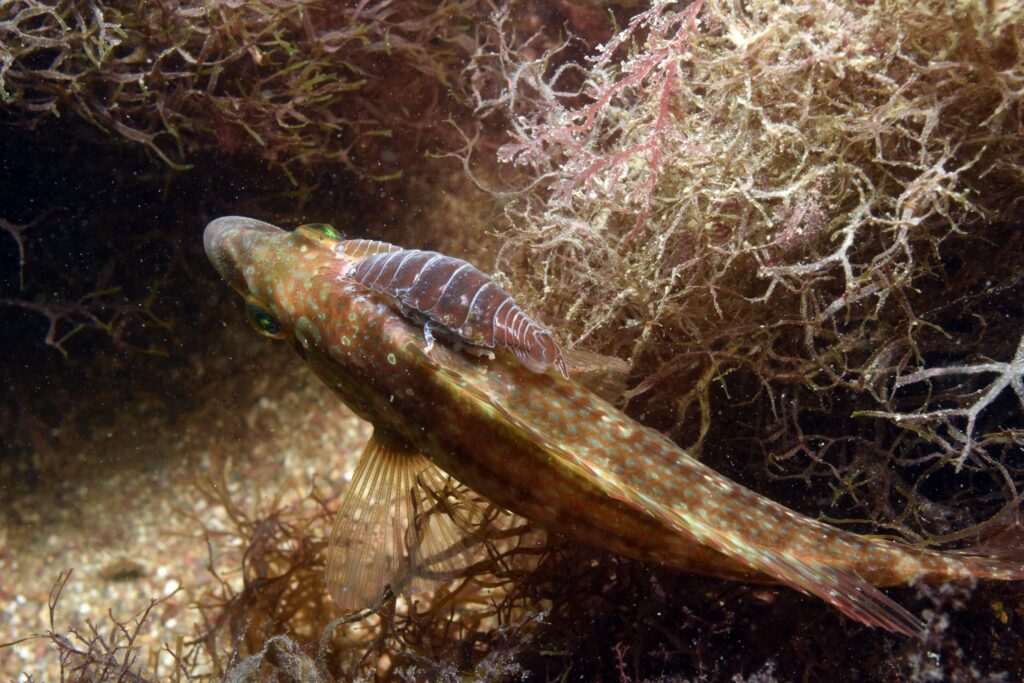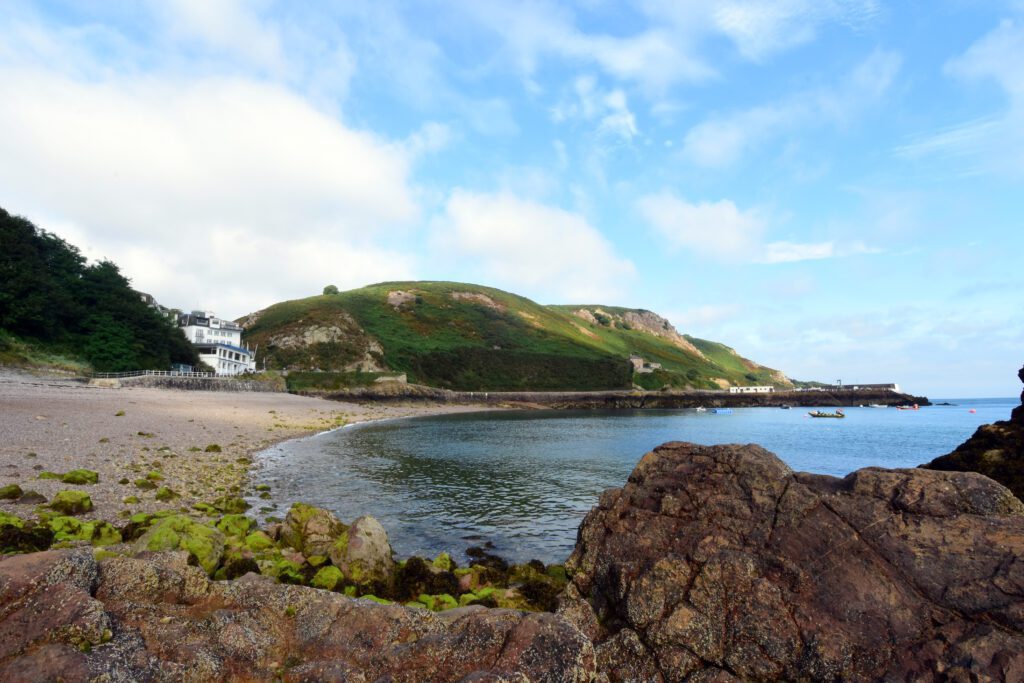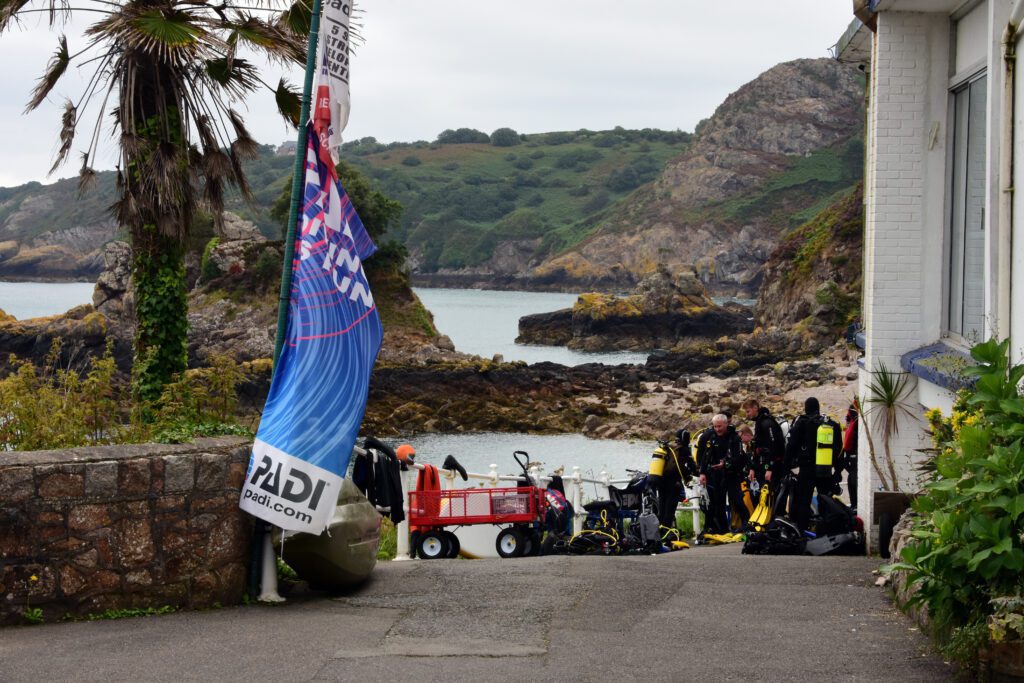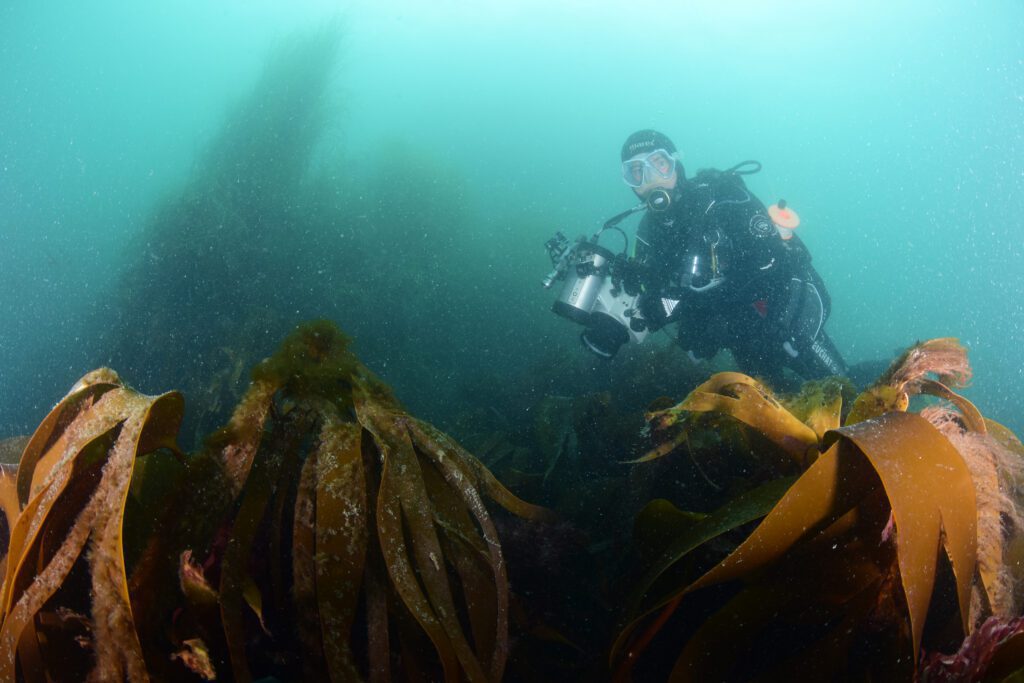As the ferry sets out from Poole Harbour, winding out past Brownsea Island, Sandbanks and Studland, it feels properly like getting away from the UK – JEREMY CUFF looks forward to the pleasant continental vibe of the Channel Islands as he heads off to dive in Bouley Bay
I had once enjoyed an excellent weekend of diving at Jersey’s Bouley Bay and I had vowed to visit again one day, but it took some eight years to make that a reality again. It’s a lovely scenic bay located on the island’s north-east coast, with a sheltered position that allows for year-round diving.
On a clear day, you can sit and eat crab sandwiches or an omelette and chips from Mad Mary’s Café and look over all the way to the coast of Normandy. The gentle arc of the bay is interrupted by a rocky outcrop to the east known as L’Islet, and bounded to the north-west by a stone jetty.
Bouley Bay is accessed by a steep winding road, characterised by switchbacks and sea views. There is limited parking for those bringing their own vehicle or a hire car, so it’s a good idea to get there early – no later than 9am to be safe. The “A-roads” on Jersey are more like B-roads or even country lanes, so you shouldn’t expect to get anywhere quickly!
Dive briefing
It’s best to dive Bouley Bay with a guide, so that you can get the most out of a visit. That said, the sheltered and safe conditions mean that most competent buddy-pairs could go it alone, find plenty to see and not get hopelessly lost.
The main decisions to be made are when to go in (which might be determined by the tide times, because there is quite a big tidal range here), where to get in, which is normally from either the boat slipway or from the beach (accessed by some steep steps or further along the walkway past the café), and where in the bay you want to explore.
It’s a very good idea to take an SMB to indicate your location at all times, because there will be some sporadic boat activity, especially on weekends. It pays to be vigilant, especially when surfacing, and essential to look around and listen for any oblivious craft.
Our main plan was to cover the different types of area in the bay, ranging through rocky ledges and walls, luxuriant weed and kelp beds, the rock- and pebble-strewn shallows and the flat sandy expanses – the UK’s best muck diving, perhaps?
You could divide the bay into three main areas and dive it in sections although, in reality, you could easily cover more than a single area on each dive if so desired, or if time is short.
To the east, L’Islet offers rocky ledges and walls, and is surrounded by kelp and weed beds in season. Towards the middle of the bay are the rock- and pebble-strewn shallows, the weed beds and the vast sandy expanses further out.
To the north-west is a rocky and weed-covered slope, weed beds and the sheer wall of the stone jetty. If diving in this area, look out for the large discarded anchor.
Because the bay is fairly shallow and largely current-free (although you can pick it up if you go further out), it’s possible to enjoy long dives in Bouley Bay, with the only enemy being the cold after you’ve been in the water for well over an hour.
On my earlier visit we had enjoyed a fabulous 10m of visibility, but this time it was much reduced following less-stable weather after a heatwave, with perhaps a minimum of 2m and a maximum of 5m.
The dives
Bouley Bay offers a variety of underwater topography and fascinating marine-life encounters for the underwater naturalist. The timing of a visit is key to the types of flora and fauna most likely to be encountered. For example, the winter sees more flatfish and the spring can yield lumpsuckers, whereas late summer offers the chances of john dory.
My recent visit in August was again very productive, although different in terms of the sightings from my previous mid-June trip.
Fish fans can expect some interesting and unusual finds in Bouley Bay. There are plenty of wrasse, including some quite hefty specimens. I also noticed a fair number of the parasitic crustacean Anilocra hitching a ride on some of the wrasse, like something out of Alien.

I also observed pollack, bass, bream, grey mullet, sand eels, greater pipefish, gobies and, my highlights for the trip, thornback rays and undulate rays (a new species for me).
Try as we might, we couldn’t complete the hat-trick by finding a torpedo (or electric) ray, although they are also regularly encountered in the bay. Other possibilities are flatfish such as sole and flounder, and also scorpionfish.
There is even an outside chance of spotting one of the elusive seahorses that have been sighted in the bay in past years. Because of their cryptic nature, the fact that they haven’t been seen doesn’t mean that they’re not still present.
Around the ledges of L’Islet and in among the weed and kelp beds, it’s worth looking out for impressive tubeworms. There are several species of anemone to check out around the bay, including the tube anemone and the common snakelock anemones that sometimes gives refuge to tiny translucent shrimps.

Other invertebrates included tiny nudibranchs, scallops, spider crabs (some of them quite pugnacious when confronted with a camera!), hermit crabs, cuttlefish, whelks and those large slugs sea hares.
Although the conditions didn’t allow, night dives are also possible by arrangement, and are reputed to be very good, with a local marine night-shift that includes conger eels, gurnards, cuttlefish and even squid.
A special thanks to my Jersey-based friend, diver and underwater photographer Kirk Truscott, who kindly guided the dives.
BOULEY BAY – WHAT YOU NEED TO KNOW:
Type of dive: Shore.
Experience: Great for inexperienced divers, but very interesting for the more experienced.
Depth: Maximum 12m-15m depending on tides and location but likely to be shallower.
Marine life: Biodiverse.
Visibility: Expect 2-10m.
Seabed: Sloping with varied topography, including rocky areas, sandy expanses, ledges, crevices and a stone jetty wall.
Hazards: The occasional boat, steep steps leading down to the beach, discarded fishing-line, uphill walks back to the dive-centre.
HOW TO GET THERE
Cross to Jersey with Condor Ferries on Condor Voyager or Condor Liberation from Poole, which takes about four hours, including a stop in Guernsey. You can travel with a vehicle or as a pedestrian. The full timetable and prices can be found on the website.
DIVE CENTRE
There is only one dive-centre at this location, the friendly and helpful Bouley Bay Dive Centre. It’s located on a walkway just below the (now-closed) Water’s Edge Hotel.
Photography by Jeremy Cuff
Also on Divernet: Wreck Tour 143: The Schokland, Hairy Dives but Long-Lost Alderney Wreck ID’d, Wreck Tour 127: The Wahrendorf V209, Wreck Tour 81: The M-343





